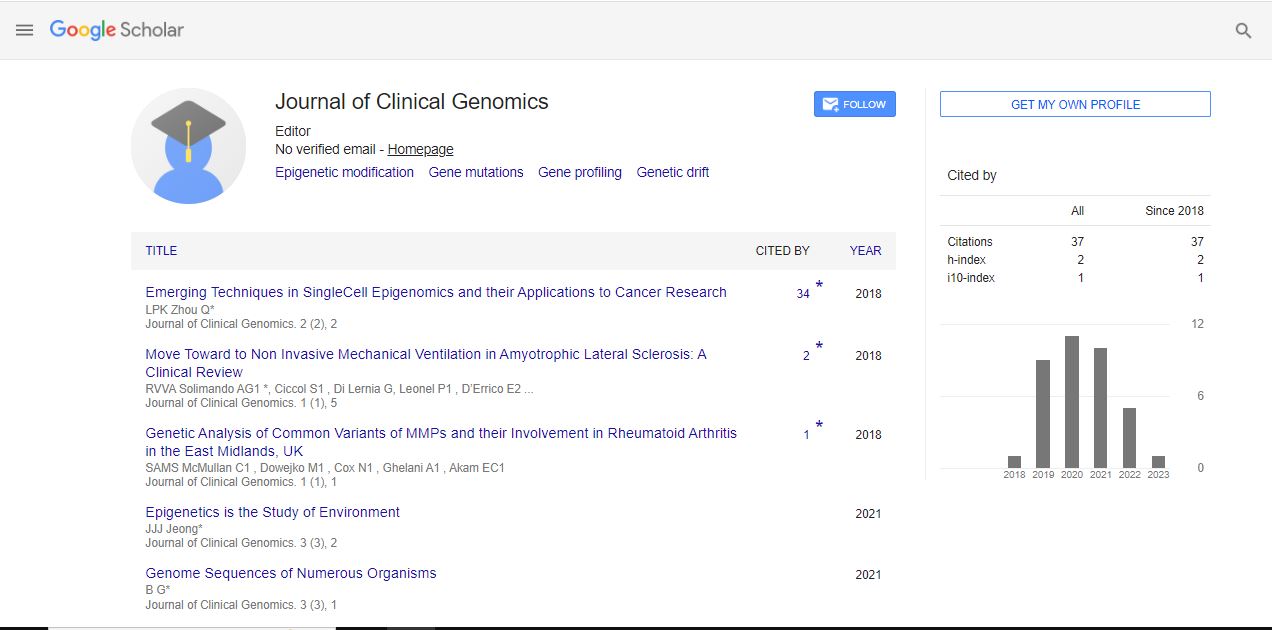Commentary, J Chromatography Res Vol: 6 Issue: 2
An Overview on Reversed Phase Chromatography and its Benefits
Stephen Tsang*
1Department of Medicine, Medical University of Bialystok, Bialystok, Poland
*Corresponding Author: Stephen Tsang,
Department of Medicine, Medical
University of Bialystok, Bialystok, Poland
E-mail: tsang.s@gmail.com
Received date: 02 June, 2023, Manuscript No. JCGR-23-107800;
Editor assigned date: 05 June, 2023, PreQC No. JCGR-23-107800 (PQ);
Reviewed date: 19 June, 2023, QC No. JCGR-23-107800;
Revised date: 26 June, 2023, Manuscript No. JCGR-23-107800 (R);
Published date: 06 July, 2023, DOI: 10.4172/JCGR.1000063.
Citation: Tsang S (2023) An Overview on Reversed Phase Chromatography and its Benefits. J Chromatography Res 6:2.
Description
Reversed Phase Chromatography (RPC) is a widely used and effective analytical technique that separates and analyzes non-polar and Compounds with a low polarity in a sample. Developed in the mid-20th century, this chromatographic method has become a foundation in various scientific disciplines, including pharmaceutical research, environmental analysis, food and beverage industry, and biochemistry. The principle of RPC involves the interaction of hydrophobic analytes with a hydrophobic stationary phase in the presence of a more polar mobile phase.
Principles of reversed phase chromatography
The principle of reversed phase chromatography is based on the differential interaction of non-polar and analytes with low polarity with a hydrophobic stationary phase and a polar mobile phase. The process involves the following important steps:
Sample application: The sample containing non-polar or analytes with low polarity is dissolved in a polar solvent to ensure solubility. The sample is introduced onto the stationary phase by using various injection techniques, such as manual injection, auto sampler, or online injection.
Mobile phase: The mobile phase in RPC is typically a polar solvent, such as water or an aqueous buffer, mixed with an organic solvent, such as methanol or acetonitrile. The proportion of the organic solvent is gradually increased during the chromatographic run, creating a gradient that elutes analytes from the column based on their hydrophobicity.
Separation mechanism: As the mobile phase flows through the column, non-polar analytes interact more strongly with the hydrophobic stationary phase and are retained longer. Polar analytes, on the other hand, interact less with the stationary phase and are eluted earlier.
Detection: After elution from the column, the separated analytes are detected and quantified by using various detectors, such as UVvisible detectors, fluorescence detectors, or mass spectrometers.
Advantages of reversed phase chromatography
Reversed phase chromatography provides several distinct advantages over other chromatographic methods, including:
Versatility: RPC is highly versatile, capable of analyzing a wide range of non-polar and analytes with low polarity compounds, including lipids, hydrophobic peptides, and non-polar drugs.
High resolution: RPC provides high resolution, enabling clear separation of closely related compounds.
Compatibility with biomolecules: RPC is compatible with biomolecules, such as proteins and peptides, facilitating their analysis and characterization.
Sample preparation: Sample preparation in RPC is relatively effortless, involving disappear the sample in a polar solvent, which simplifies the analytical procedure.
Faster analysis: RPC provides rapid analysis times compared to other chromatographic methods, improving sample throughput.
Applications of reversed phase chromatography
Pharmaceutical investigation: RPC is extensively used in pharmaceutical analysis for drug discovery, quality control, and pharmacokinetic studies.
Environmental analysis: Chromatography with Reversed Phases is applied in environmental monitoring to analyze pollutants, pesticides, and hydrophobic contaminants in water, soil, and air samples.
Lipid analysis: RPC is particularly useful for lipid analysis, allowing the separation and quantification of various lipid classes in biological samples.
Food and beverage industry: RPC is employed in the food and beverage industry to determine the presence of lipids, flavors, additives, and contaminants.
Peptide and protein analysis: RPC plays an important role in proteomics studies, allowing the separation and identification of hydrophobic peptides and proteins.
 Spanish
Spanish  Chinese
Chinese  Russian
Russian  German
German  French
French  Japanese
Japanese  Portuguese
Portuguese  Hindi
Hindi 